From the tip of England’s tallest peak to the nation’s deepest lake, this national park is stacked with super-sized scenery.

Photo by: South West Coast Path/Roy Curtis
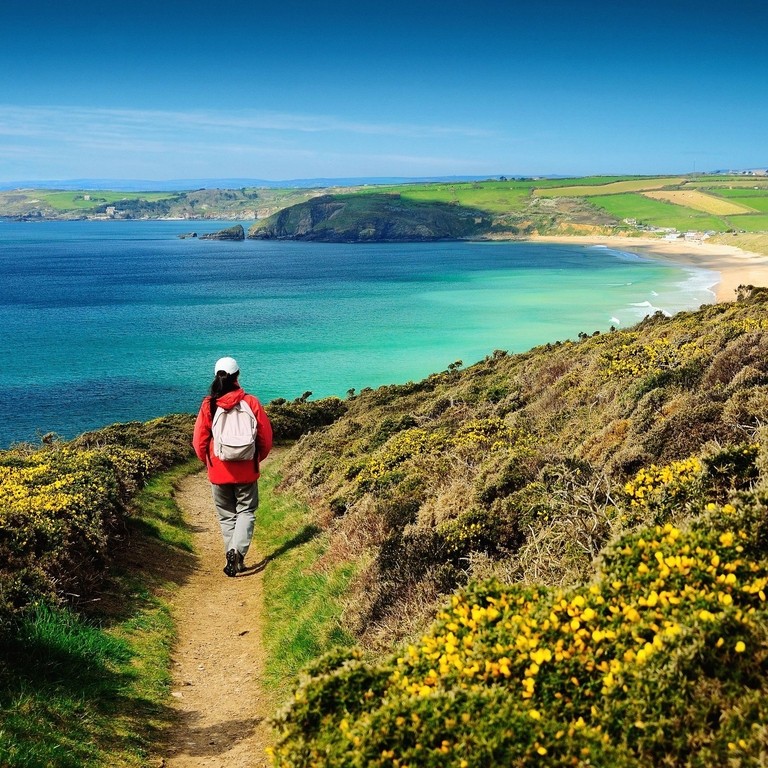
When completed, the King Charles III England Coast Path will be the world’s longest shore walk, encircling the entire English seaboard: a remarkable 2,795 miles (4,500km). From the southern tip of Cornwall to the uppermost reaches of Northumberland, it will link world-famous landmarks with little-known corners – a journey through unique cultures, experiences, geologies, history and more.
With more sections of the path officially open, others will soon follow the already established routes like the South West Coast Path. As with all of Britain’s National Trails, it’s up to you how you walk it. Maybe you’ll hike its entirety, follow a long-distance route, or dip into shorter day walks? Look out for backdrops to film and TV favourites, too. The Holy Island of Lindisfarne in Northumberland appears in Danny Boyle’s thriller 28 Years Later (2025), while the Exmoor National Park coastline in Devon features in The Salt Path (2025).
Here, we focus on the sections that are now completed and signposted as the King Charles III England Coast Path. There are walks for all abilities, in all parts of the country. Where will the trail take you?
Photo by: Getty Images
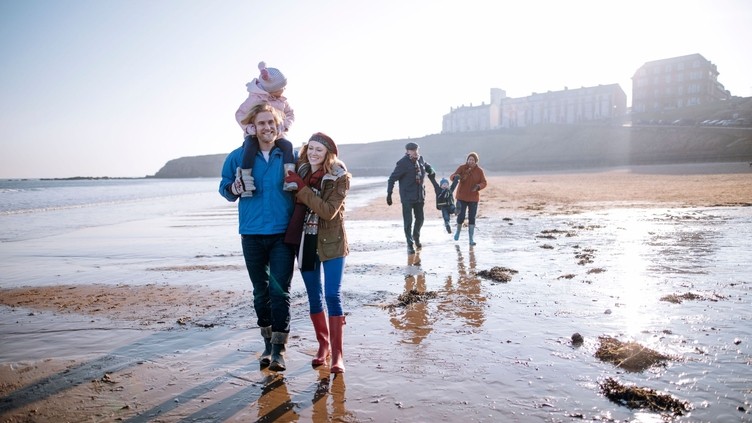
Britain’s beaches aren’t just for the summer – you can feel the sand (or pebbles) between your toes all year round. From secret coves to enormous dunes, the King Charles III England Coast Path takes you past some of our most treasured seaside spots. On the England Coast Path’s north-east stretch, follow the part of the route to Tynemouth, where its priory, castle and aquarium make it a great year-round destination for the whole family. A fish and chip supper is a must for keeping warm!
Photo by: VisitBritain/Pawel Libera
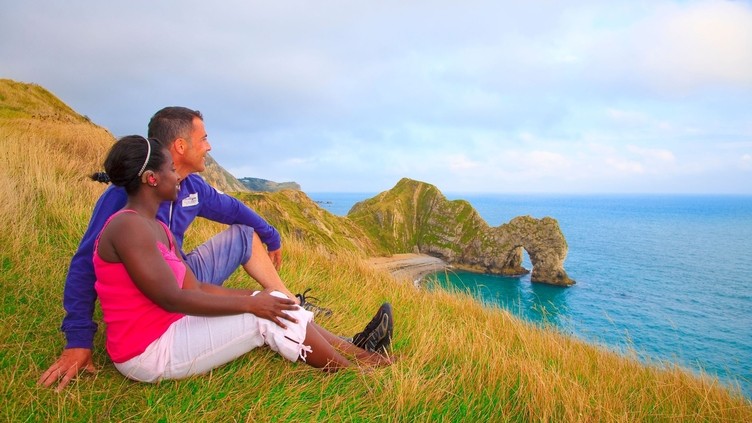
For a breathtaking introduction to England’s southern coast, look no further than the England Coast Path route between Portland and Lulworth Cove. Totalling 19.8 miles (32km), it encompasses Chesil Beach, Weymouth, Portland’s wildflower-strewn cliffs and the sandy shores of Lulworth Cove. This was the first section of the Coast Path to open, to coincide with the 2012 London Olympics.
Photo by: VisitBritain

Welcome to the edge of the world. Towering over the English Channel, the mighty Seven Sisters cliffs – dazzling white, thanks to their natural chalk – are one of the south coast’s most iconic sights. You’ll explore them on the 33-mile (53km) trail between Eastbourne and Shoreham-by-Sea, as well as Newhaven’s nature reserves, Cuckmere Haven beach, and the lively city of Brighton.
Photo by: Getty Images
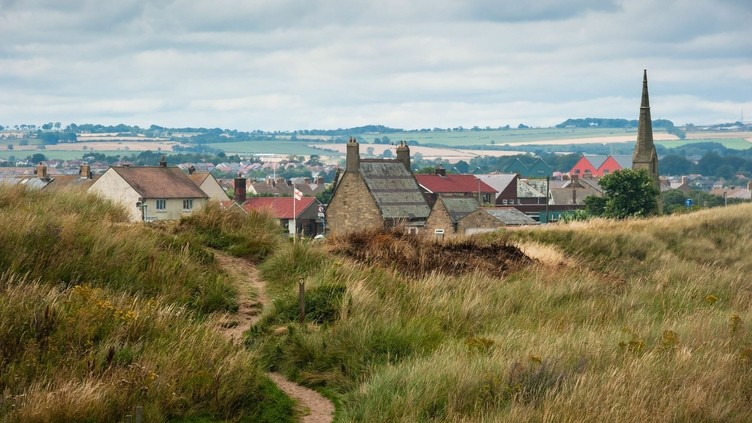
If you love your beaches wild and your trails crowd-free, you’ve come to the right place. On the north-east stretch of the England Coast Path, the 44-mile (71km) path between Amble and South Bents is dotted with lonely lighthouses and windswept sands, with the North Sea as its constant companion. Along the way, be sure to visit Tynemouth Castle, Whitley Bay and the Roman fort of Arbeia.
Photo by: VisitBritain/Ollie Kilvert

For golden sands and quaint harbour villages, look to the rambling Norfolk coast. The King Charles III England Coast Path between Hopton and Weybourne covers 83 miles (133km) of this glorious eastern shore, calling at the seaside resort of Great Yarmouth and Winterton-Horsey’s wildlife-filled dunes. It also links up with the Peddars Way and Norfolk Coast Path National Trail.
Photo by: VisitBritain/Pawel Kepa
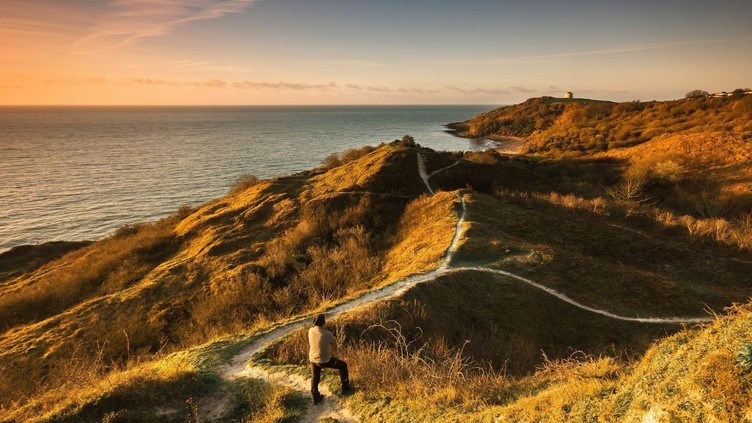
Heading to London? For an off-beat adventure, hike the south east leg of the King Charles III England Coast Path from Woolwich, in East London, to the sea. This 49-mile (79km) section follows the River Thames as it flows from city to coast, swapping historic landmarks and busy wharves for wildlife-rich marshes and beaches. Its finale, the Isle of Grain, is renowned for its migratory birds and – if you’re lucky – grey seals.
Photo by: chilli_booboo

On the edge of the Lake District National Park, the north-west section of the England Coast Path reveals Cumbria’s seaside charms. It hugs the shore between Allonby and Green Road Station, near Millom, for an 81 mile (130km) journey through Victorian towns, wide sandy beaches and thriving nature reserves. The route between Silecroft and Green Road has excellent wheelchair access.
Split into five sections (North West, North East, East, South East and South West) National Trails shows each part of the King Charles III England Coast Path in detail. For all open paths and any diversions, keep a look out on the National Trails’ King Charles III England Coast Path interactive map as well.
Photo by: missevieelizabeth
Walking the path between Brean Down and Minehead? Take a detour through the Quantock Hills, to enjoy springtime’s newborn lambs and flower-filled hedgerows.
Learn more about the Quantock HillsPhoto by: Visit Brighton
Loud, proud and bursting with love — it’s Pride time in Brighton! This August festival is one of Britain’s biggest LGBTQIA+ celebrations, with an incredible seaside parade at its heart.
Learn more about Brighton & Hove PridePhoto by: richyjmo_
Walney Island in Cumbria is a haven for wildlife, and autumn brings crimson sunsets and bird sightings galore. The England Coast Path loops around the whole isle.
Learn more about Walney IslandPhoto by: harbourlightsguesthouse
Fancy an ice-cold swim on Christmas Day? On 25 December, hundreds of hardy souls jump into Weymouth Harbour to raise money for charity, so why not join in, or just give them a cheer?
Learn more about WeymouthClose to final stretch of the north west section of the King Charles III England Coast Path, Liverpool is a UNESCO City of Music with seriously cool credentials.
In the north east, this tiny harbour village is ideal for accessing Northumberland’s section of the path, while Bamburgh sits to the north.
From soft sandy beaches for miles to thrills and spills at the pleasure beach, tick off a traditional seaside experience in the east section of the path.
Right on the south eastern stretch between Shoreham-by-Sea and Eastbourne, Brighton is a fun-loving city on the south coast, with a huge choice of quirky bed and breakfasts.
Near the route between Brean Down and Minehead in the south west, this region is an official National Landscape, offering farm-stays and campsites.
Whether you’re travelling by train, bus or road, England’s coast is simple to reach – and is within an hour’s journey of many major cities, including London. For international arrivals, Gatwick Airport is just a 30-minute drive or train journey from Brighton, while Folkestone and Newcastle (whose sections of the King Charles III England Coast Path are already open) offer ferry links with France and the Netherlands.
The King Charles III England Coast Path provides improved access to the country’s shoreline, making it easy for everybody to visit. However, the coast is also home to thriving cities, towns and attractions, so it’s already very simple to navigate. For day walks, why not take the bus to a location on the path, and then hike back to your hotel? Or, hire a bike to explore the nearby countryside trails.
Walk it, of course! Even though the full route isn’t completed, many sections of the King Charles III England Coast Path are already open – so you can have a preview.
From charming steam trains to high-speed networks, England’s coast is well connected by rail. Services usually link up with bus routes, too.
Venture out on two wheels to discover the best sights, beaches and picnic spots. Not all sections of the path are suitable for cyclists though.
To find out how the King Charles III England Coast Path is progressing, check out the official website.
